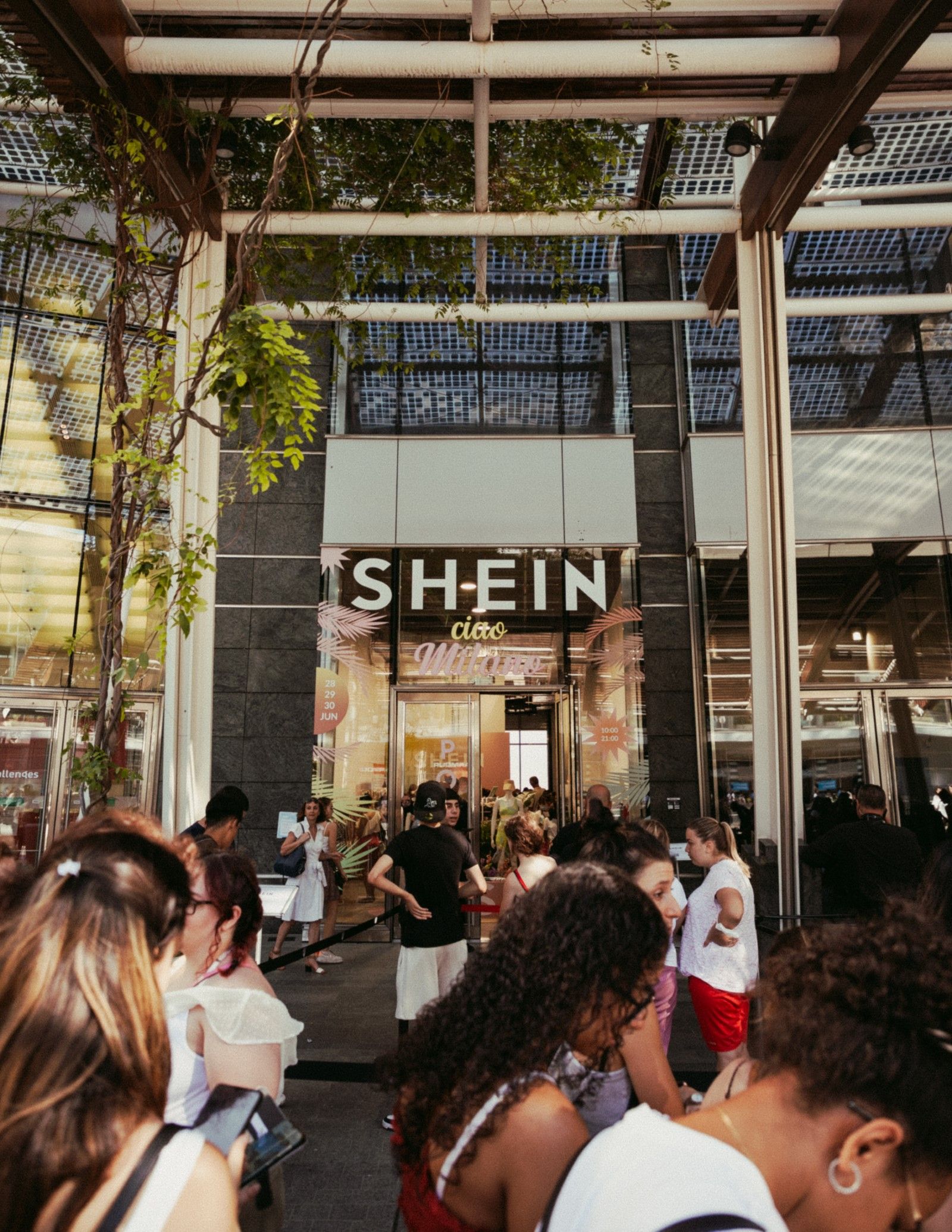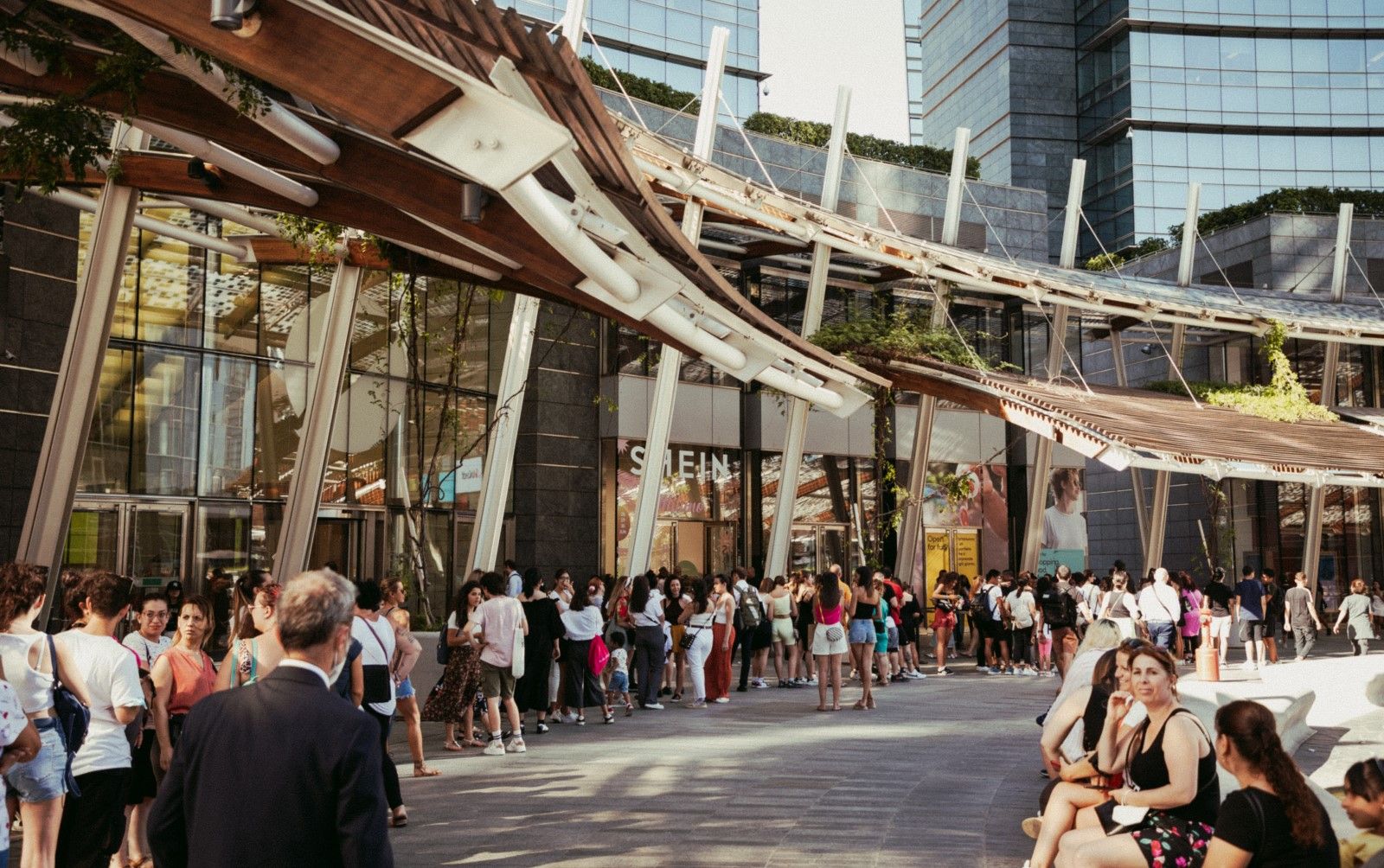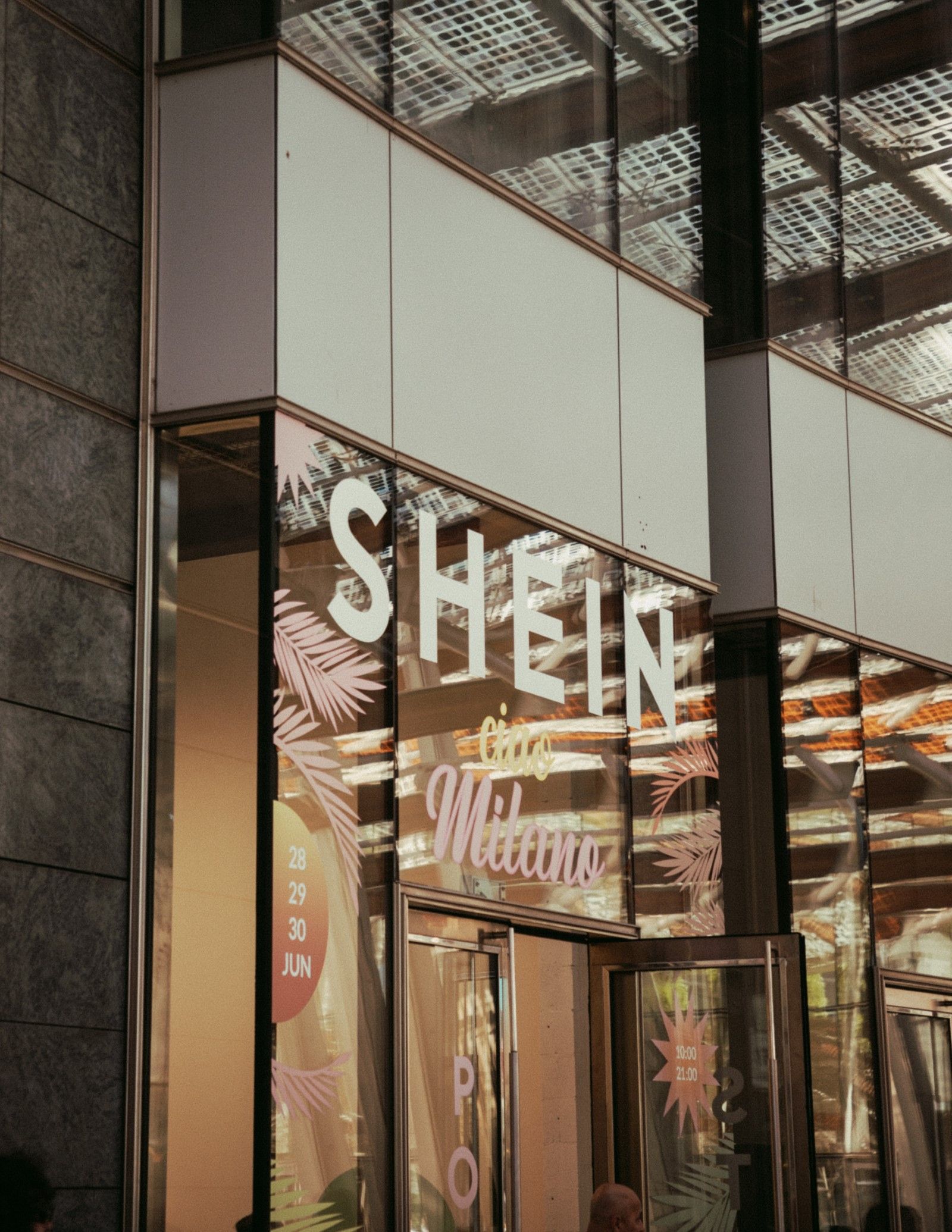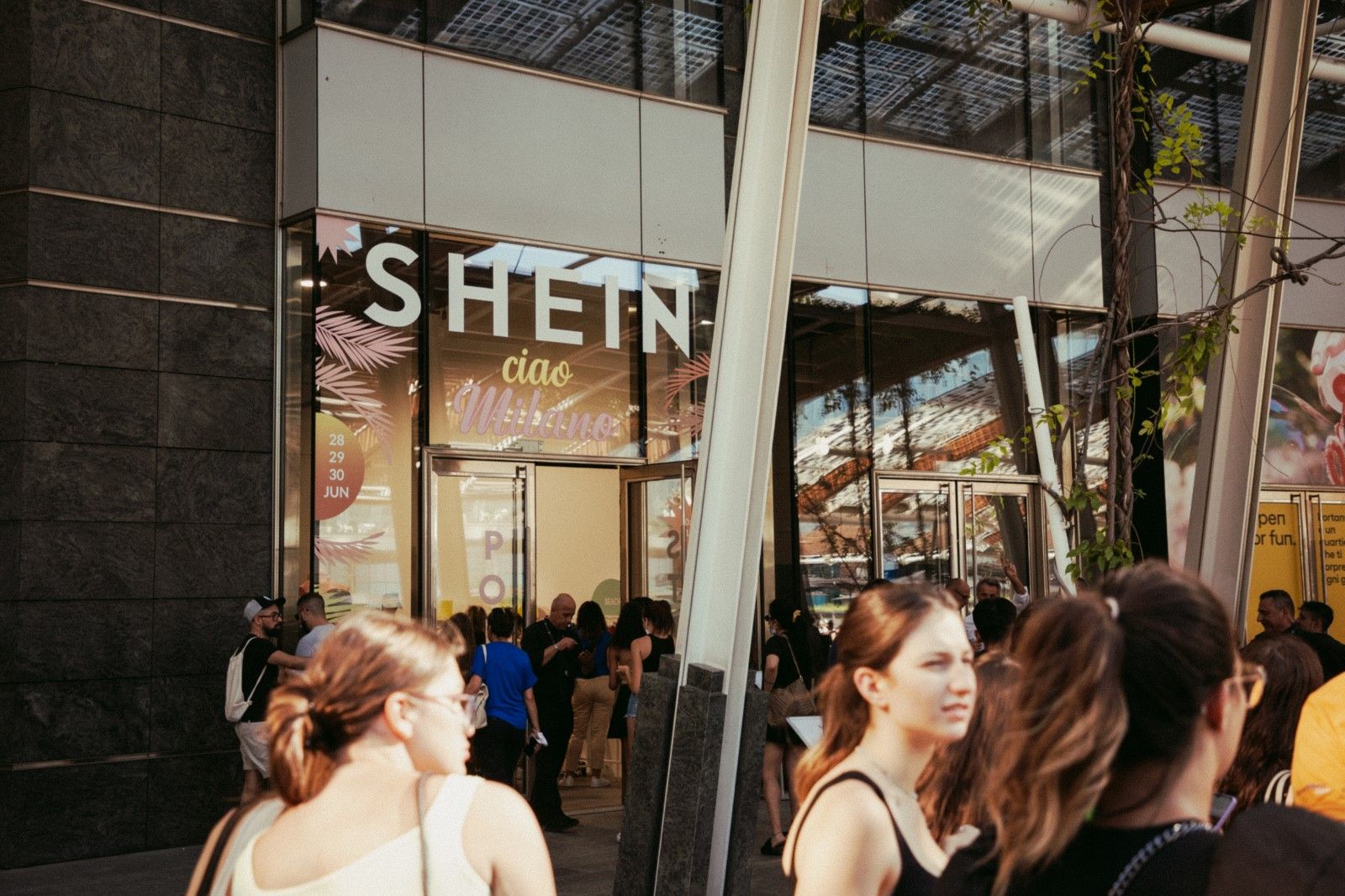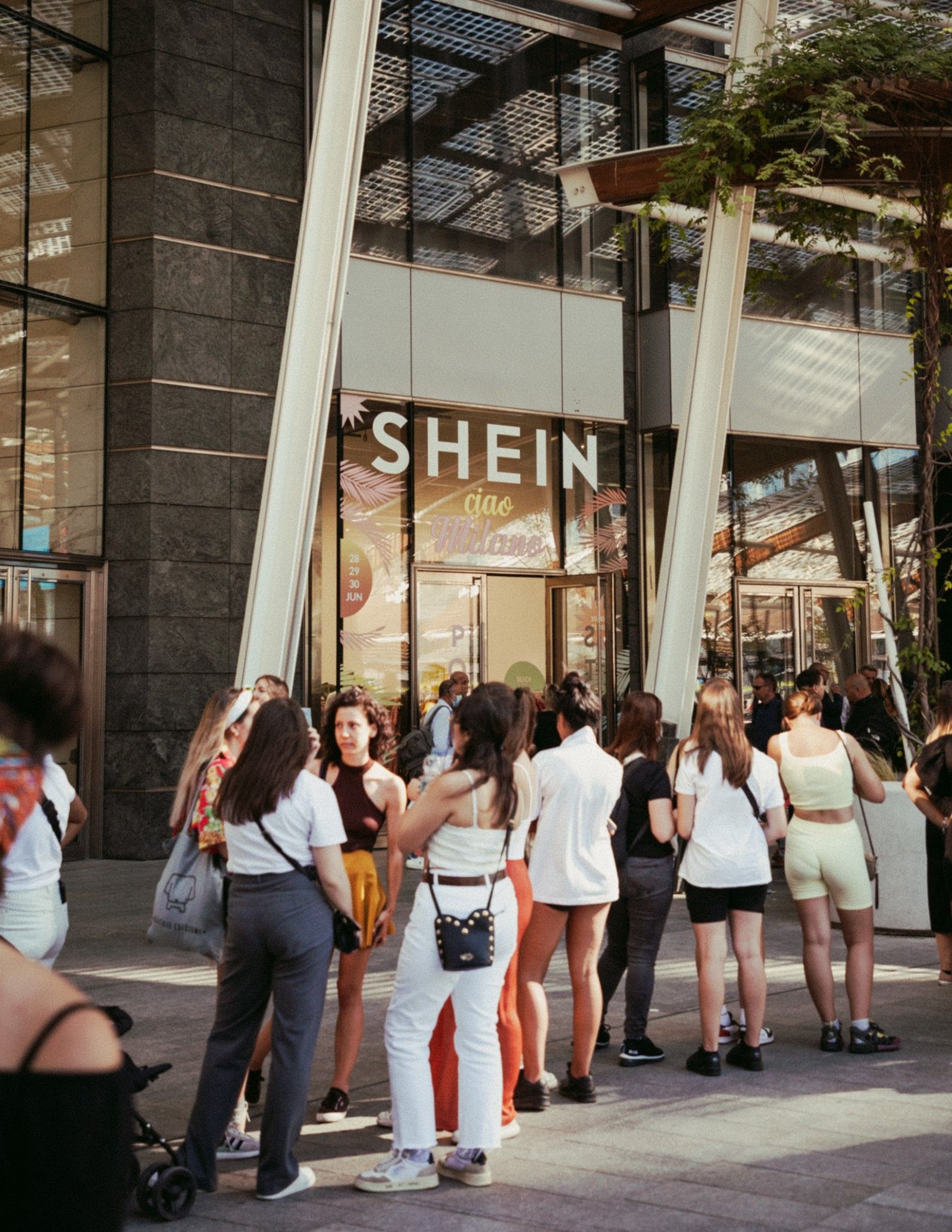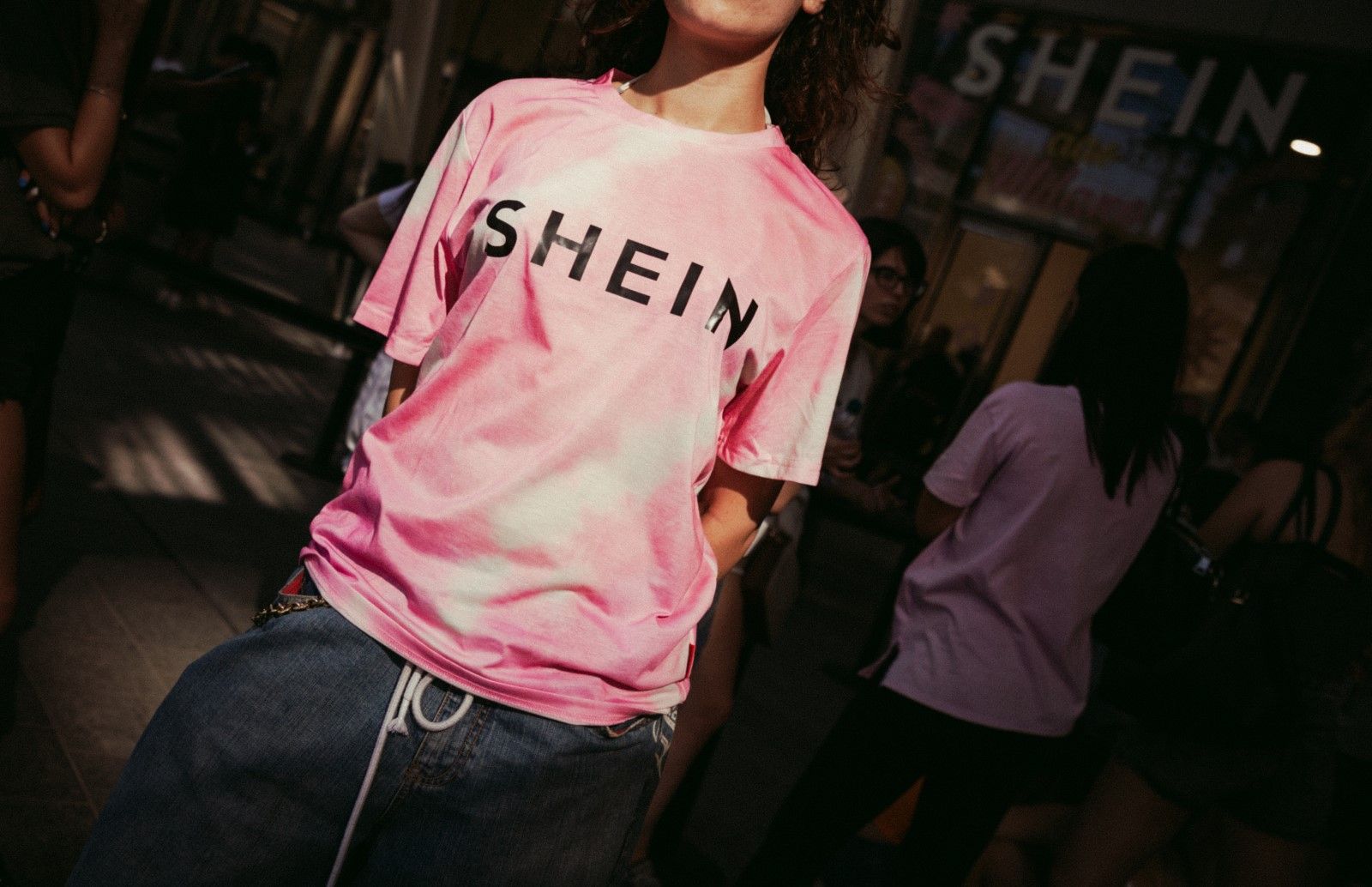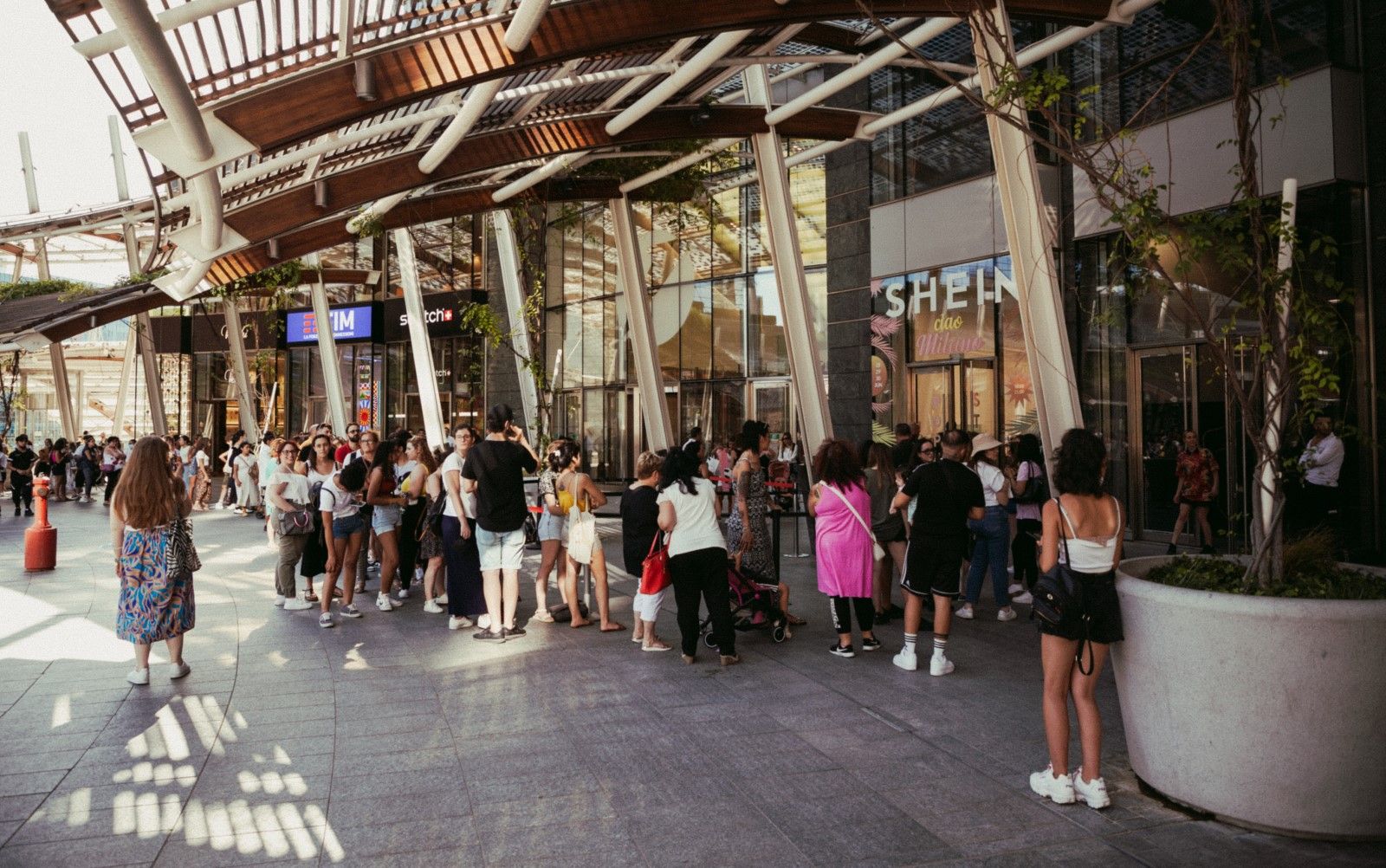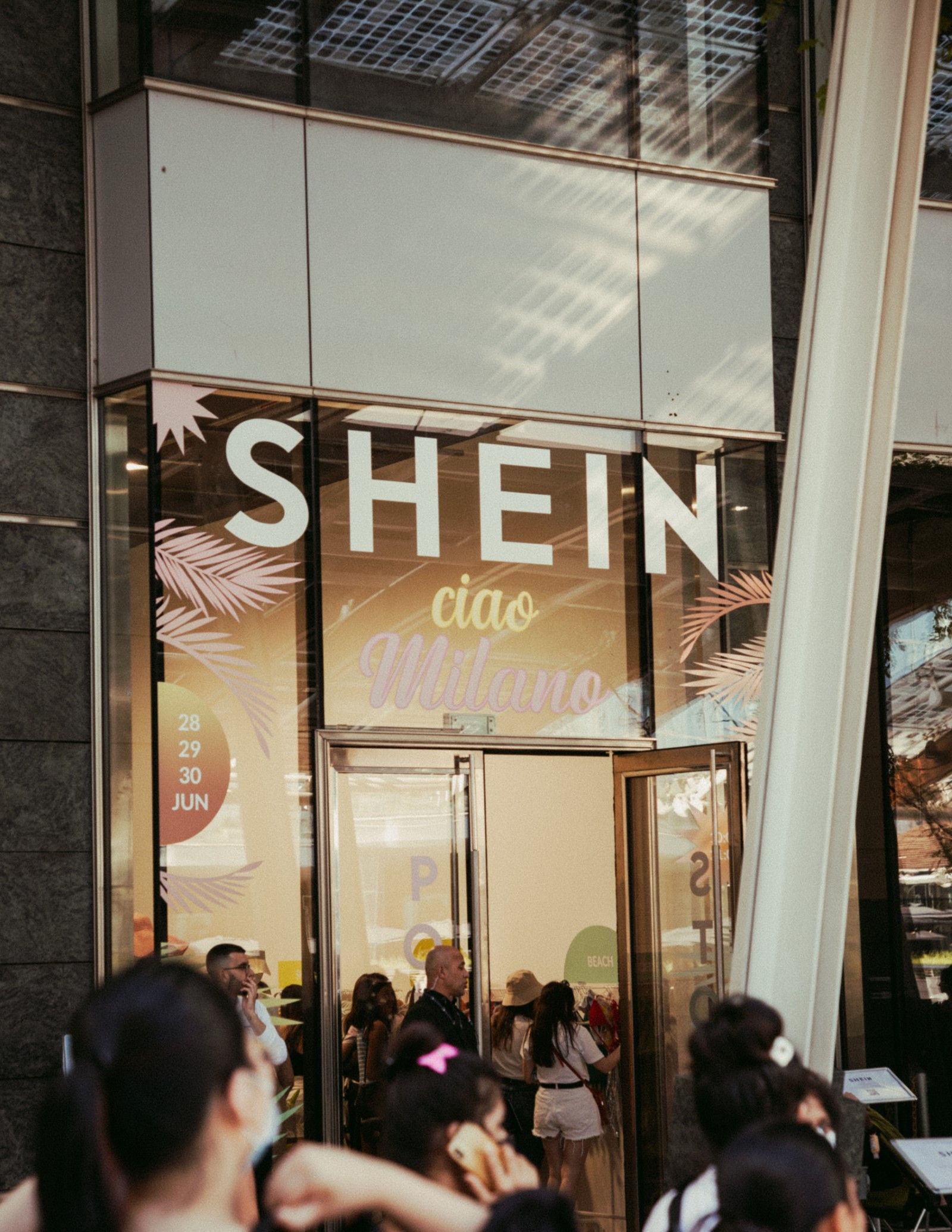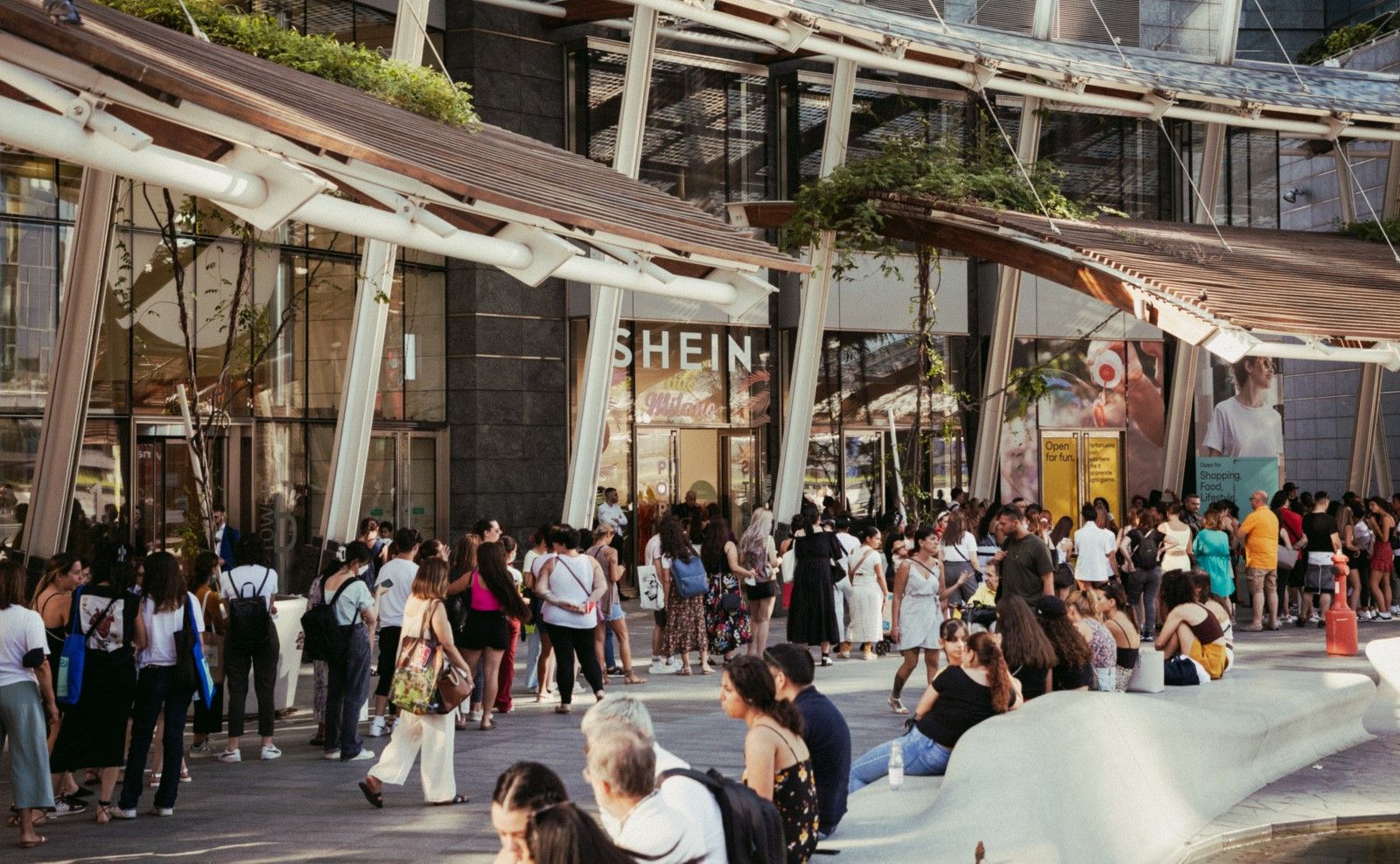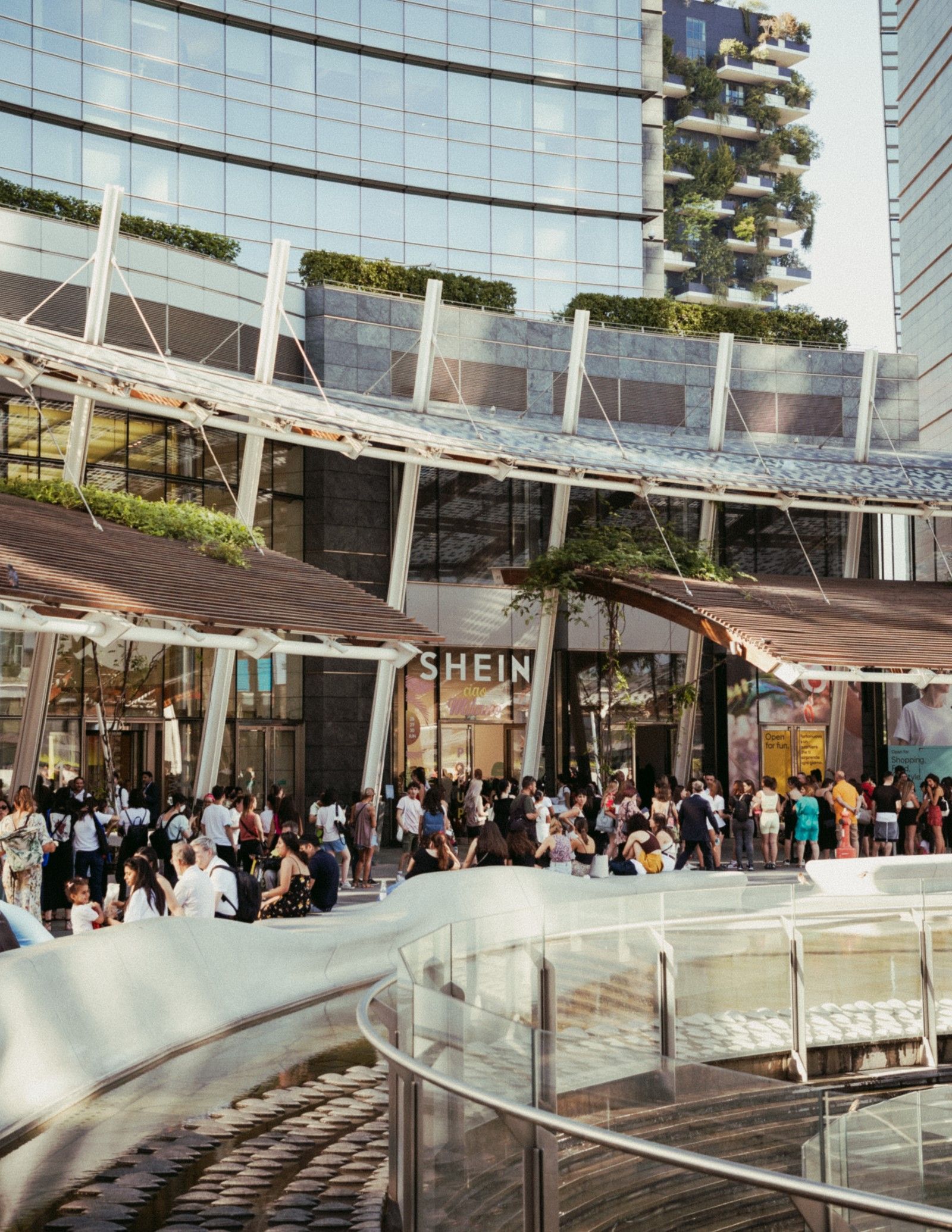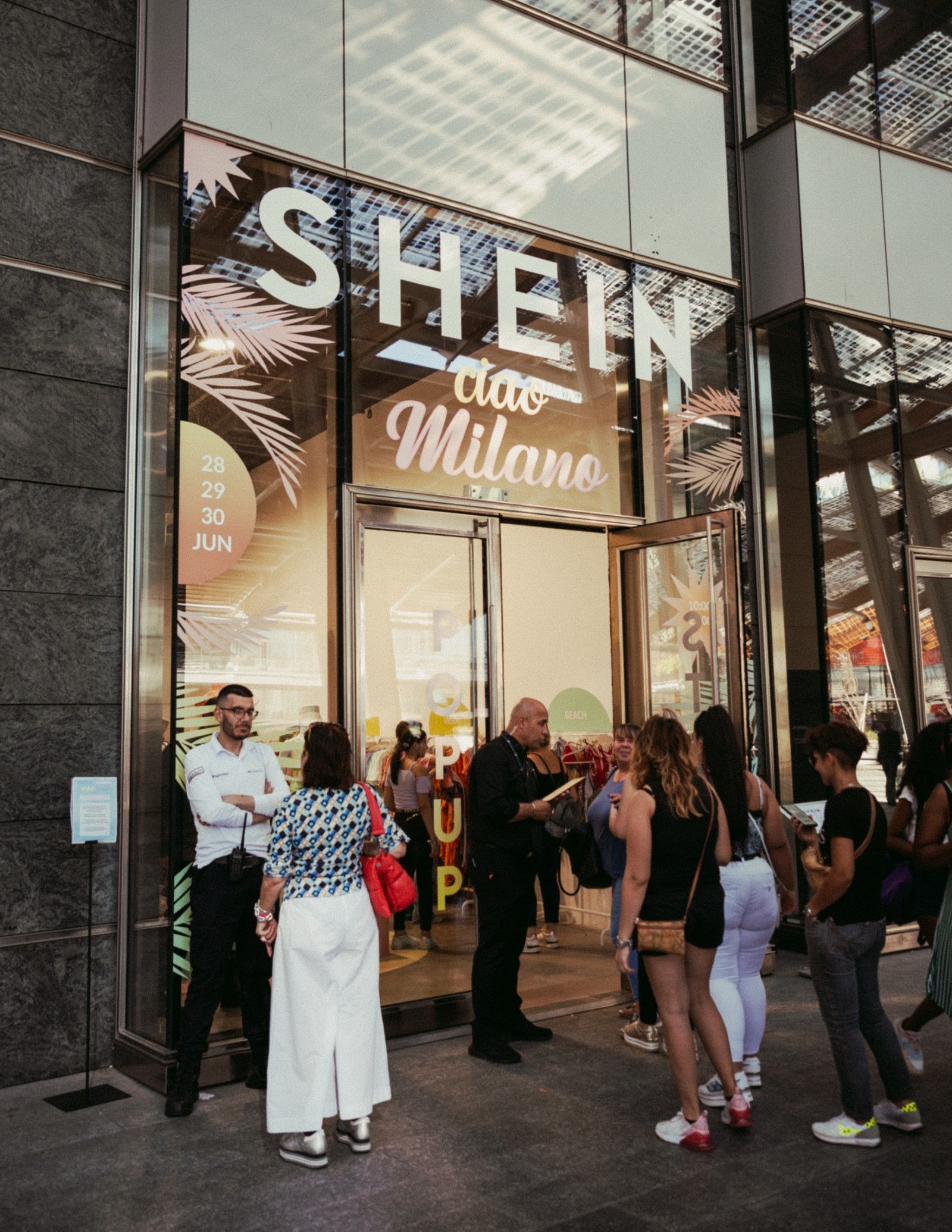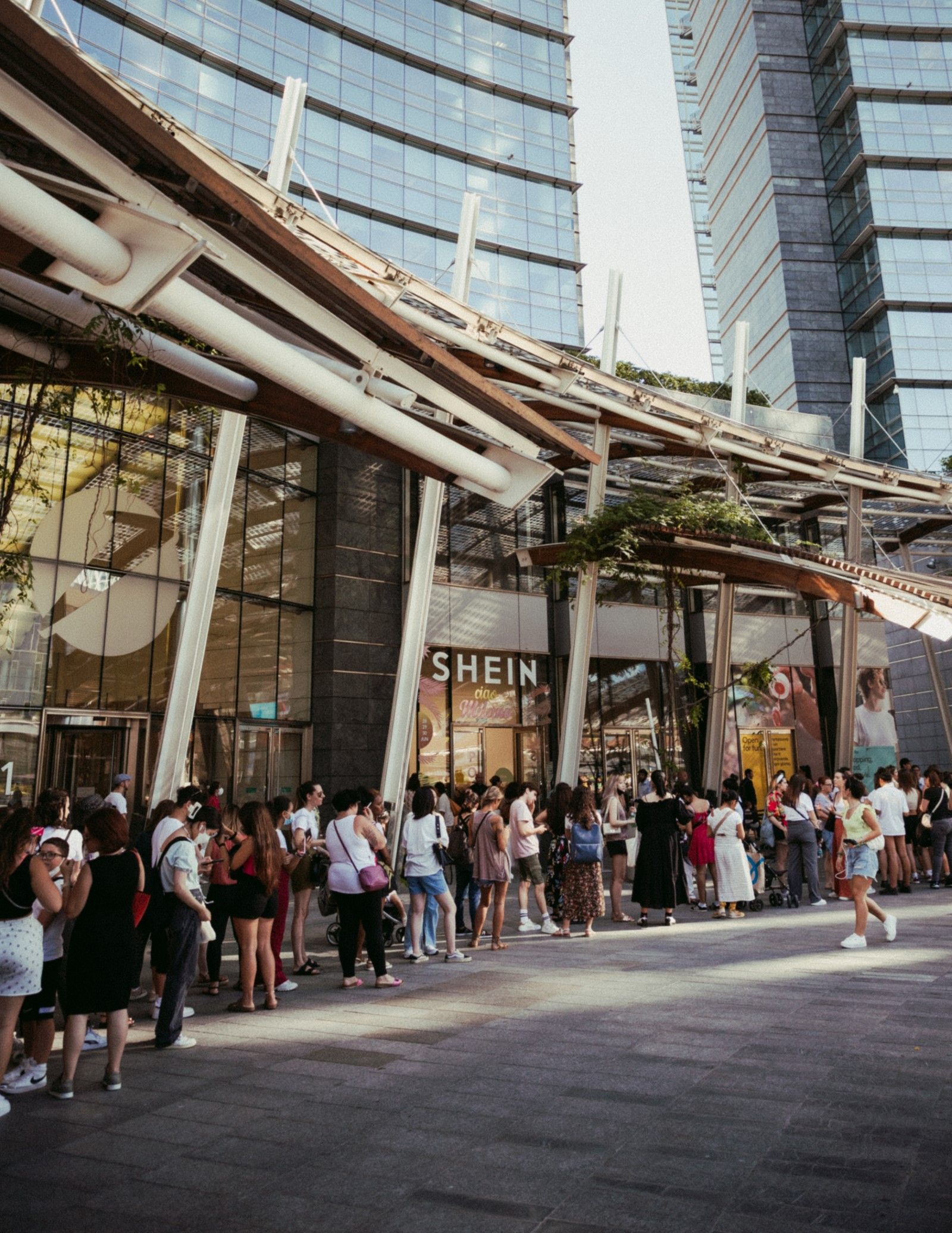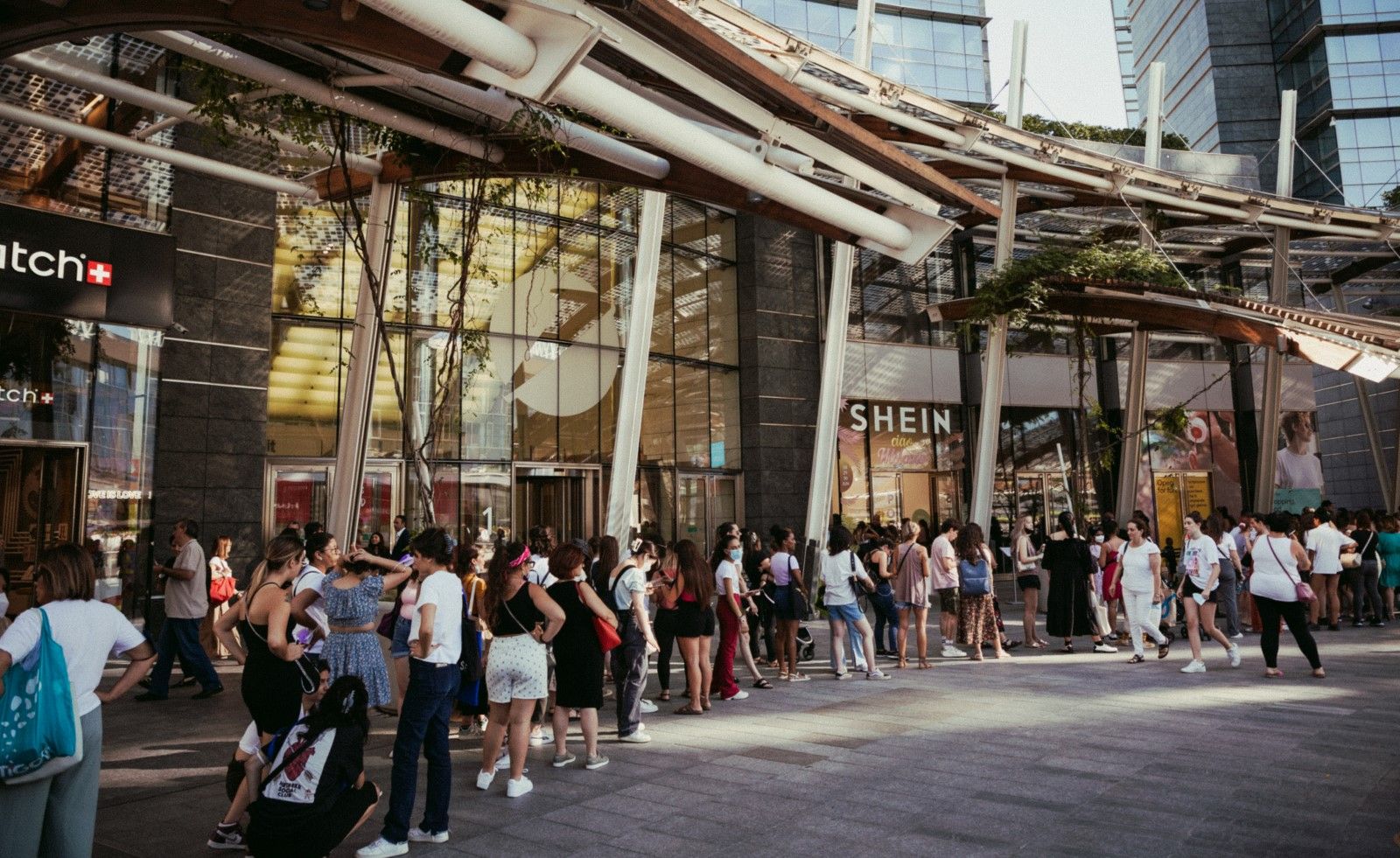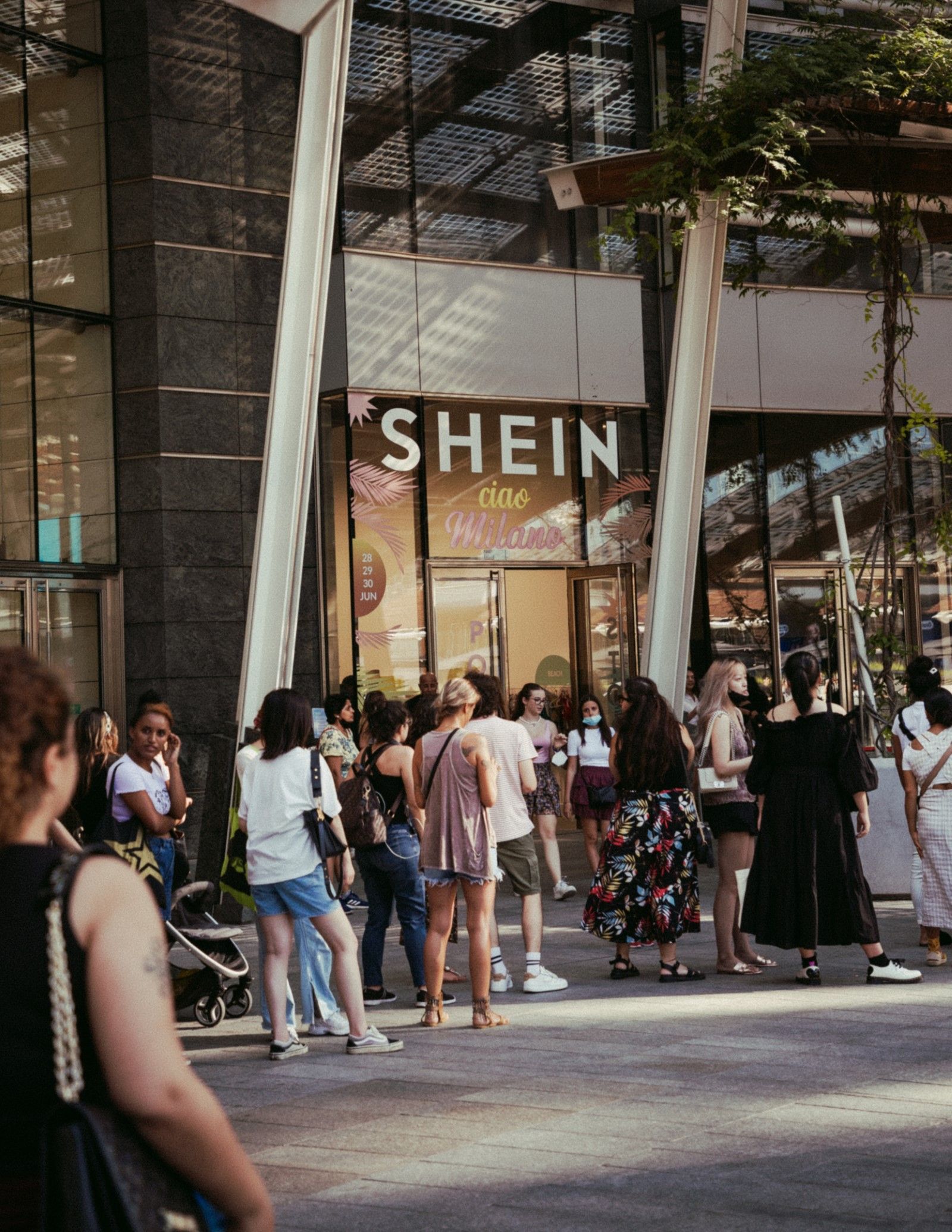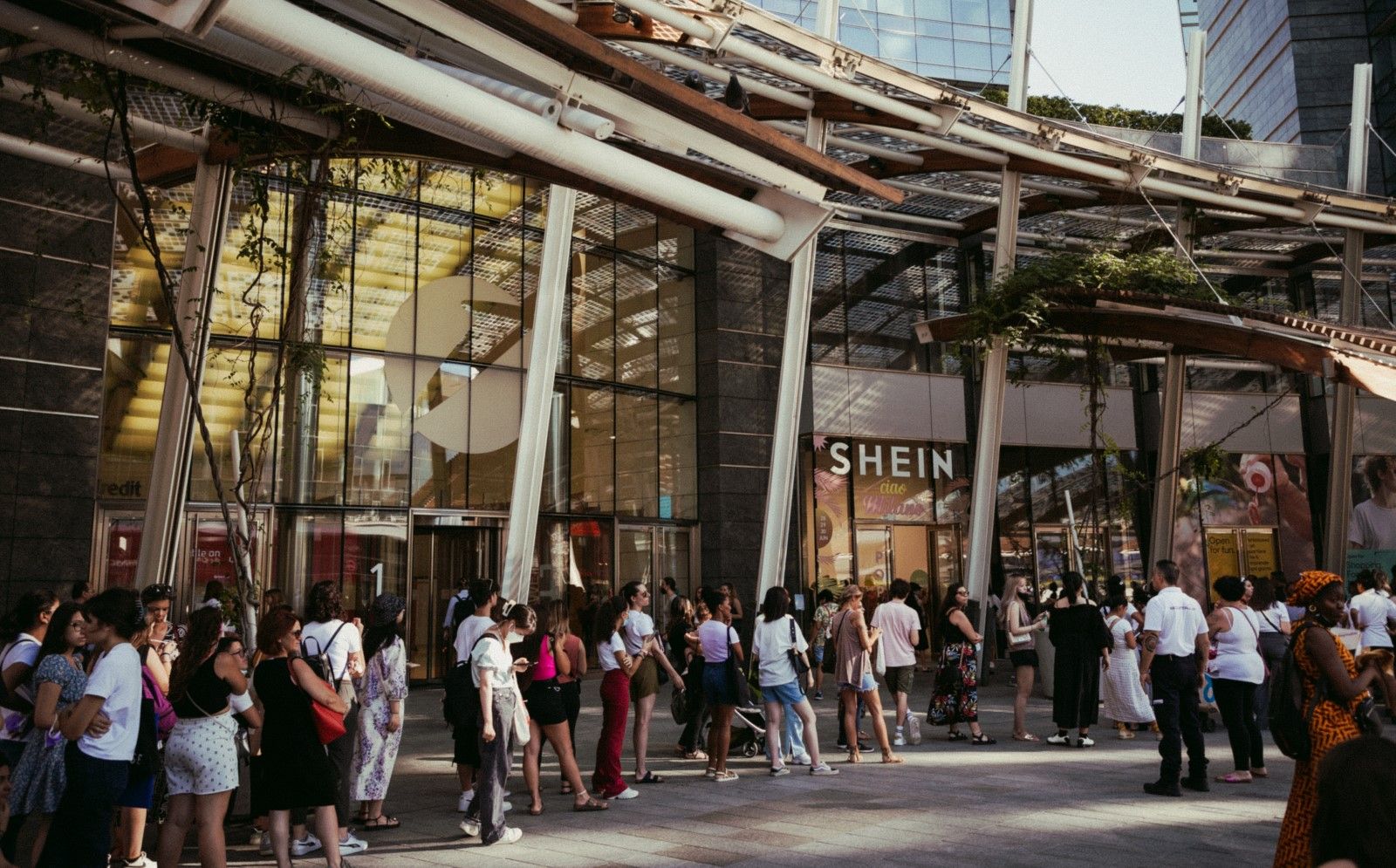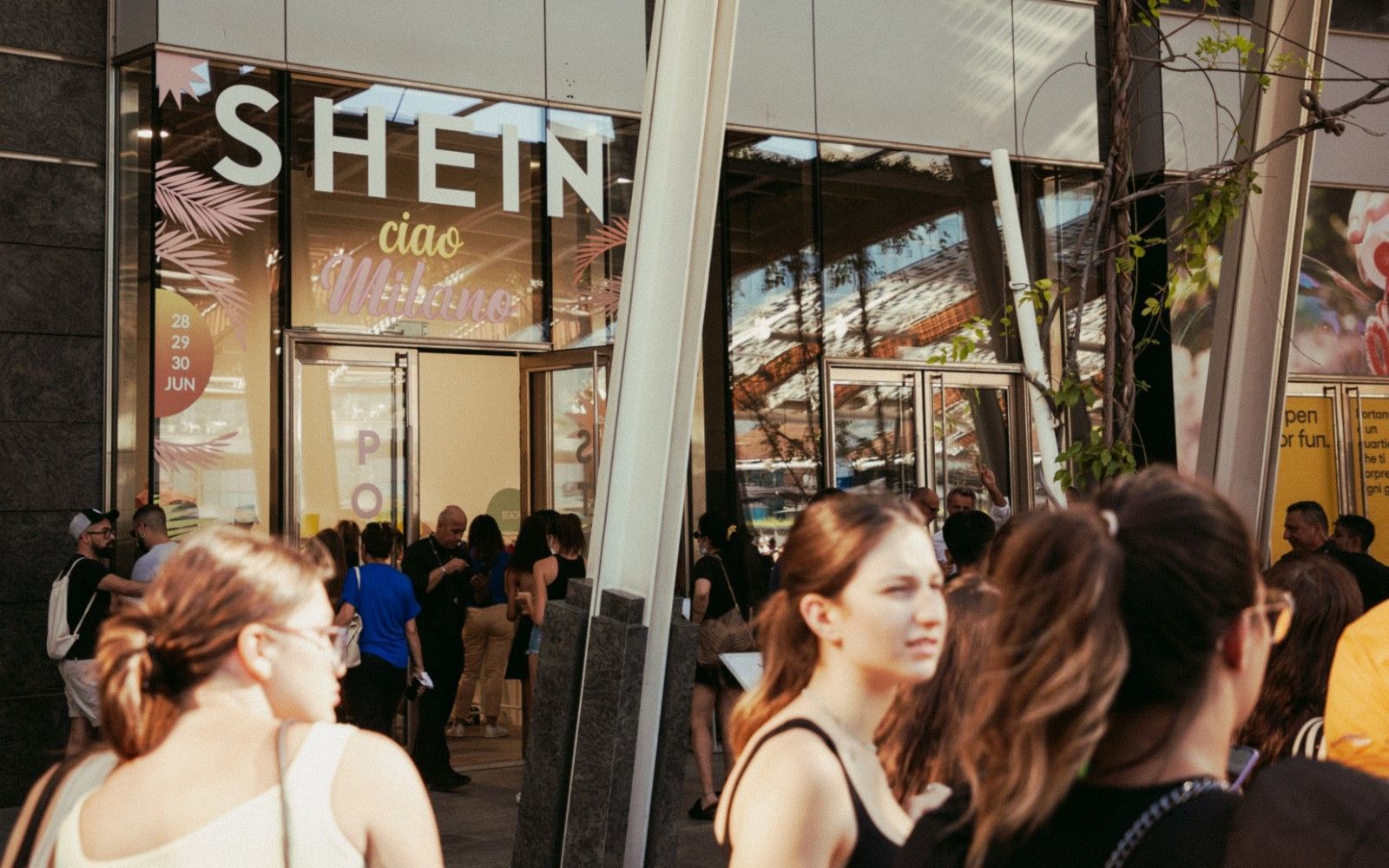
What can we learn from Shein's Milan pop-up success? Do we have any polyester?
Shein's first Italian pop-up opened in Piazza Gae Aulenti the day before yesterday. The first social media photos that we saw this morning show a gathering of young people of many different ages who, predictably, crowd in front of the entrance ready to buy cheap T-shirts, skirts, shoes, bags and every imaginable product but also to take photos or film videos for TikTok in the social-friendly corner that the store has dedicated to various hashtags and geotags. Once again, as was the case at the opening of Primark in Via Torino, fast fashion proves to hold the imagination, heart and wallet of Gen Z in a very tight grip - the reason for this success is, clearly, economic: cocktail dresses at €5, skirts that run between €7 and €10, heels at €20 and of course rip-off and prudently unlogoed bags at €30. What is most surprising, for those looking at the issue from inside the cultural fashion bubble, is the polarization of opinions around the Chinese brand: if within the aforementioned bubble Shein is looked upon with a certain disdain for many different reasons; outside the bubble, for young and old alike, it is seen as a kind of godsend, the brand that alleviates the peer pressure of capitalism in a world where even Zara is starting to get too pricey for some sections of the public. The problem then is not so much Shein as a phenomenon, but Shein as a consequence of a fashion industry that on the one hand instigates the public to consume by all means but on the other continues to exclude them with the pricing barrier in a dangerous upward game.
Testimony to the credit Shein possesses, by the way, is its progressive approach to the customer: the first few times one heard of it, the brand was a remote entity, its orders arriving (if they arrived at all) days or weeks late; then the app was born, spreading like wildfire around the world within a year while half the press and industry rating associations were questioning the sustainability of its products, its labor policies, and its numerous plagiarisms to independent designers. In the past year, things have changed. Now Shein has a multilingual website, a returns policy, is represented by local news agencies, and even produces reports on its sustainable practices - in February the brand even released a video show under the cry of #SHEINforall, has initiated collaborations with indie designers, programs for large donations to charities, and has even found success investing in the plus-size market. Not bad for a brand that, until twenty months ago, was something of a non-presence, a Wizard of Oz that no one had ever seen. Certainly the audience continued to buy and the brand to grow as its presence became more and more institutional, verifiable, local. Little matter the tragic ballads about sustainability and hyper-consumption, all jeremiads that do not escape from the self-referential fashion bubble - Italian teenagers, along with a huge number of others across the country, and even around the world, continue to crowd the doors of the pop-up stores opened not only in Milan but also in Madrid, Paris, Las Vegas, and Melbourne, among other locations. However, the question remains: why?
Our society is accustomed to craving. The rush of dopamine that rises to the brain after buying clothes or, in general, after consuming a good or service has become a drug. A 15-minute walk around town, but also a half-hour spent on one's couch scrolling through various apps, is a constant invitation to consume. Fashion brand marketing does not stop at high-profile billboards alone; quite the contrary. One only has to walk around the streetcar and bus stops scattered around the outskirts of Milan to see how fashion brands try to market their products even to audiences very different from the upper middle class of Monte Napoleone. If we also add to this level of ubiquity the enormous influence of social media with all its sponsored posts, influencers, and celebrities, it is no surprise that the segment of the public that finds itself craving luxury products is much larger than the segment that can actually afford them.
In recent years, this unexpressed desire to circumvent the price barrier has led to the sanctification of secondhand with platforms like Vestiaire Collective and Vinted making fashion more accessible; with the emergence of sites that compare different retailers to find the cheapest deal; and with the boom of normcore brands multiplying today as streetwear brands multiplied yesterday. Times and flags change, in short, but the hunger for consumption is still the same. Meanwhile, as luxury Zar-ifies, Zara luxifies: fast fashion repositions itself as high street today and perhaps, tomorrow, as premium and then luxury the day after tomorrow with the price barrier rising and becoming an obstacle race. And as brands play catch-up in an overcrowded and hypercompetitive market, the gap between the desire to consume and the impossibility of doing so is being bridged by Shein, the brand that learned the principles of fast fashion and then made them even more extreme, even more indispensable.
«Don’t hate the player, hate the game», they say. And indeed, how can one blame the audience for just wanting to live that dream that is promised but never given? Shein's enormous success should be attributed not so much to its specific business model but to the workings of the industry as a whole. A few months ago, an activist from Youth for Climate France accused LVMH of filling «public advertising spaces and inspire people to consume beyond all limits, including those who cannot afford their products». After all, it is the aspirationality of fashion that has decreed the success of Zara and H&M in the past, as well as that of Shein today and all other brands, luxury or otherwise: a rising tide lifts all boats.










































